Understanding the essence of dinking
What is a dink in pickleball?
At its core, a pickleball dink is a soft shot played over the net, intended to land in the opponent’s non-volley zone. Dinking is all about controlling the ball’s trajectory and placement, minimizing risk, and forcing your opponent into a reactive position. Unlike powerful smashes or aggressive drives, the dink demands finesse and strategy akin to a chess game where every move needs to be calculated. Just as a sculptor carefully chisels away at a block of marble to reveal a masterpiece, you must craft each dink to place pressure on your opponent and create opportunities.
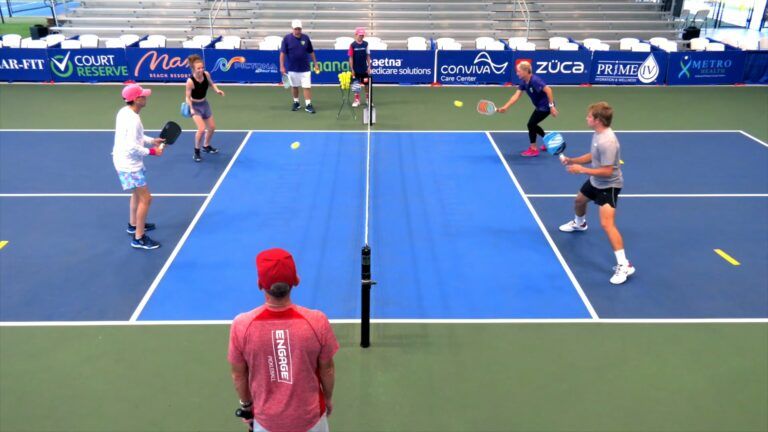
The dinking technique is essential for maintaining control during rallies. Rather than blasting the ball across the court, dinking allows players to dictate the tempo and rhythm of the game. This softened approach can lead to errors from the opponent, opening avenues for powerful shots or volleys. Thus, mastering dinking not only develops your skills but also enhances your overall gameplay, pushing you closer to victory with every soft touch.
Why is dinking so crucial in pickleball?
Understanding the importance of dinking goes beyond just executing a shot. It serves as a tactical mechanism to control the pace of the game and set up future opportunities. Dinks can frustrate opponents, forcing them into awkward positions and making them susceptible to mistakes. When you smoothly maneuver the ball over the net, creating uncertainty, you are effectively gaining a mental edge. Dinking is not merely about keeping the ball in play; it’s about playing smart and outthinking your rivals.
The benefits of dinking in pickleball are vast. Effective dinking can lead to forced errors from your opponent, giving you an upper hand in rallies. It allows players to engage in rallies at the non-volley zone (NVZ), shifting the dynamics of play as they think strategically about how to position the ball. Additionally, controlling the game through dinking creates opportunities for aggressive shots, letting you take advantage of your opponent’s weaknesses. Mastering the art of dinking can be the difference between a tightly contested match and an overwhelming victory.
Developing your dinking technique
Grip and paddle control for effective dinking
A solid foundation starts with the pickleball grip and paddle control. Whether you’re a right-handed or left-handed player, mastering the grip ensures that each dink is executed with precision. As you hold your paddle, think of it as your paintbrush. The pressure you apply determines the stroke too heavy, and you may overshoot; too soft, and the ball won’t reach its target. Finding the right balance is crucial for making effective dinks without risking mis-hits.
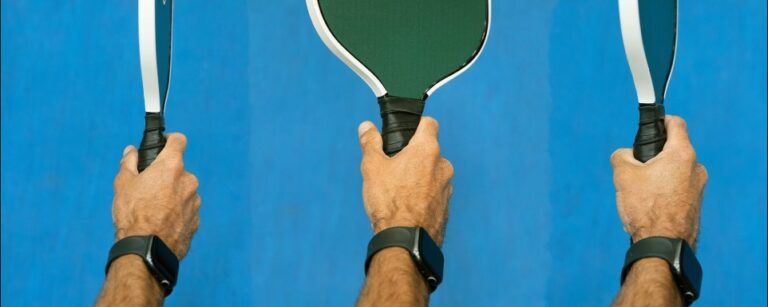
Aim for a relaxed grip on your paddle to foster a soft touch. Avoid flicking your wrist, as this often leads to overhitting and uncontrolled shots. Instead, use a gentle, smooth motion, akin to a conductor guiding an orchestra. The oratory flow of your hand will dictate the tempo of your dinks, ensuring they land effectively in the opponent's zone. A well-executed grip and paddle control can turn the dinking game from a chore into a seamless part of your gameplay.
Body positioning and footwork fundamentals
Equally as essential is your positioning and footwork during dinking. Maintaining a proper stance helps establish balance and prepares you for movement. Stand with your feet shoulder-width apart and your knees slightly bent, which can be likened to an athlete poised to spring into action. This allows for quick lateral movements as you control each dink shot with finesse.
Being in the ready position is similar to a dancer poised for the next move fluid and ready to glide into action. Always position yourself inside the non-volley zone (NVZ) for those crucial dinks. This not only allows for easier recovery but ensures that you are well-placed to react to your opponent’s shots. Remember, dinking isn’t solely about the shot itself; it’s about how you position yourself in anticipation of the dynamic flow of the game.
The "elephant trunk" analogy for smooth dinking
One helpful analogy for the dinking motion is the "elephant trunk." Just as an elephant uses its trunk to reach, sway, and deliver food with delicate precision, you too can apply this principle to your shots. Engaging your shoulders, let your paddle gently push the ball over the net without relying solely on wrist flicks. This smooth, continuous motion will help create a consistent rhythm in your dinking practice, allowing you to control the ball rather than sending it careening off into the net or beyond the baseline.
By visualizing your dinking stroke as an elongated trunk, you encourage a more fluid and deliberate style of play that emphasizes touch and accuracy over speed. The essence of the dinking motion lies in its smoothness, a delicate waltz with the ball as it glides effortlessly across the court, ready to be brought under your control at any moment.
Easy pickleball dinking drills for beginners
Warm-up with the toss the ball drill
Before diving into intense practice sessions, warming up with the toss the ball drill can be incredibly beneficial. This technique requires no paddle; players simply toss the ball back and forth to develop hand-eye coordination and control. Begin by standing a few feet apart from your partner and tossing the ball underhand to one another. Focus on catching the ball softly and aiming for a specific point.
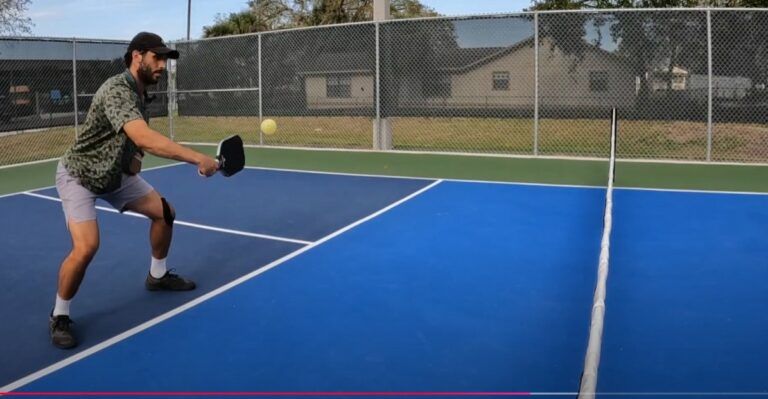
As you grow comfortable, gradually decrease the distance between you and your partner while continuing to toss. This drill emphasizes “dinking practice” through the act of simply receiving and controlling the ball. Not only does this enhance your ability to track the ball, but it also lends itself to a deeper understanding of dinking dynamics that come into play later on. Concentrated practice in this basic form often leads to major improvements on the court.
Develop feel with the dinking without paddles drill
Building on the previous drill, the dinking without paddles drill encourages focused partner practice to develop feel. Stand in the NVZ with a partner and gently tap a ball back and forth this time with hands. The absence of paddles forces you to engage in soft touches and control, emphasizing the delicate touch needed for effective dinking.
By focusing solely on hand-eye coordination and soft touch, players can internalize the movements associated with successful dinks. This drill allows players to better appreciate the pace they need to incorporate into their game upon transitioning back to using paddles. It provides a unique opportunity to develop muscle memory while eliminating the complications that can accompany a paddle.
Build consistency with the bounce, tap, push drill
For those looking to build consistency, the bounce, tap, push drill serves as an excellent exercise to develop rhythm and timing. Begin by positioning yourself near the kitchen line with your partner. Start by bouncing the ball back and forth, ensuring that you are tapping it gently back over the net. Focus on maintaining a consistent rhythm, working the ball into your partner's striking zone.
Once both players become comfortable with this motion, introduce a gradual increase in pace while maintaining control. The aim here is to orchestrate your dinking rhythm in a controlled manner, creating the nuance needed for effective game play. This drill not only reinforces timing but also establishes the essential soft contact required for dinking success.
Level up your dinking with progressive drills
Improve accuracy with the target practice drill
As you refine your dinking skills, accuracy becomes crucial, making the target practice drill a perfect fit. Set up targets on the opposing side of the court these can be cones, markers, or designated areas. The goal is to land your dinks on these specific spots, enhancing your ball placement skills.
Incorporating this drill helps improve precision significantly, compelling players to focus on their target zones. As you become adept at hitting certain areas, your confidence during actual play improves, allowing you to execute shots with greater ease. Dinking accuracy is a fundamental aspect of controlling the game, and this drill specifically enhances that essential skill.
Master control with the figure 8 drill
To develop a more nuanced understanding of shot placement, try the figure 8 drill. This engaging drill entails players dinking in a pattern that resembles the number eight back and forth across the court while maintaining control. Start with simple crosscourt shots that form the top loop of the “8,” then shift to down-the-line shots that complete the figure.
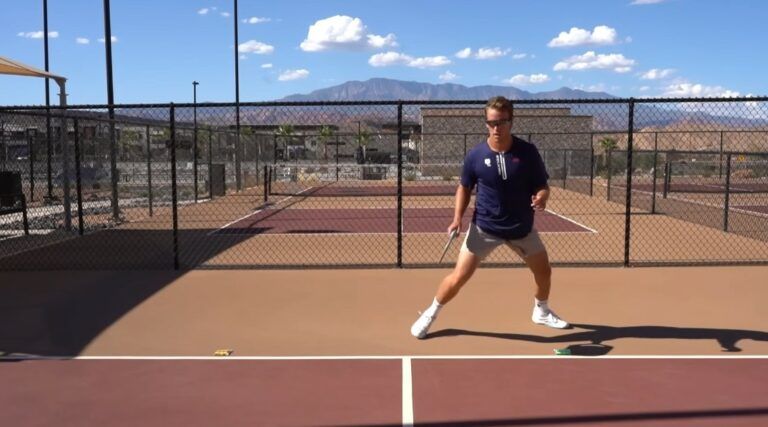
Practicing this drill sharpens consistency while forcing players to maintain control throughout the patterns. The repetitive motion also encourages muscle memory development, which is indispensable when transitioning from dinking to more aggressive shots. Players will ultimately find increase effectiveness by varying their angles and shot trajectories, providing an element of unpredictability in play.
Add pressure with the battleships drill
Finally, to simulate game conditions, try the battleships drill. Set up cones in a grid or systematic structure resembling a battleship layout. Players must navigate through these obstacles while executing dinks, ensuring they keep their shots under control despite the added pressure of maneuvering around targets.
The essence of this drill lies in challenging players to maintain precision while making clever strategic decisions. As you become accustomed to watching the angles and movement of the cones, you’ll begin to recognize similar patterns in your opponents' games. This heightened awareness can prove advantageous when the stakes are high, as you can adapt your strategies accordingly.
Dinking strategies for game situations
Control the pace with strategic dinking
Once you have a solid foundation in dinking, crafting a strategy for gameplay becomes essential. The ability to slow down the game with well-timed dinks can force even the most agile opponents to think twice about their shots. By controlling the pace and rhythm, you create room to dictate the flow of the match, forcing your rivals to react rather than initiate play.
In this strategic setup, forcing your opponent into uncomfortable positions can lead to errors or miscalculated shots. This strategic pause not only creates time for positioning but allows critical assessment of your opponent’s weaknesses. By emphasizing these tactical moments, you render yourself a savvy player skilled in the nuances of dinking.
Create attacking opportunities with dinks
Strategic dinking opens avenues for more aggressive shots. Empowered by your dinking game, you can set up volleys and force pop-ups that you can quickly capitalize on. By executing consistent dinks to change the tempo, you can coax opponents into overcommitting and setting themselves up for attacks.
Position your dinks strategically to exploit your opponent's weaknesses. If they tend to falter under pressure, mixing in soft dinks can force errors. The aim is to create opportunities that lead to straightforward finishes a key concept in mastering dinking’s offensive potential.
Use dinking as a defensive weapon
Dinking can also serve as a defensive weapon, allowing players to reset the point and regain control. When faced with high balls or aggressive opponents, a well-placed dink can stall the momentum while repositioning you at the NVZ for a more favorable rally.
As you develop this defensive strategy, remember that counter-attacking dinks can often catch opponents by surprise, redirecting the energy of the rally. Fostering a sense of patience in these moments will set the stage for successfully regaining control during an unpredictable match.
Understanding the non-volley zone (NVZ)
The NVZ: rules and boundaries
The non-volley zone (NVZ), colloquially known as the kitchen, is critical to understanding effective dinking. Players must be cognizant of NVZ rules; shots played within this area can only be executed if they are made outside the zone or if the ball bounces before reaching the kitchen.
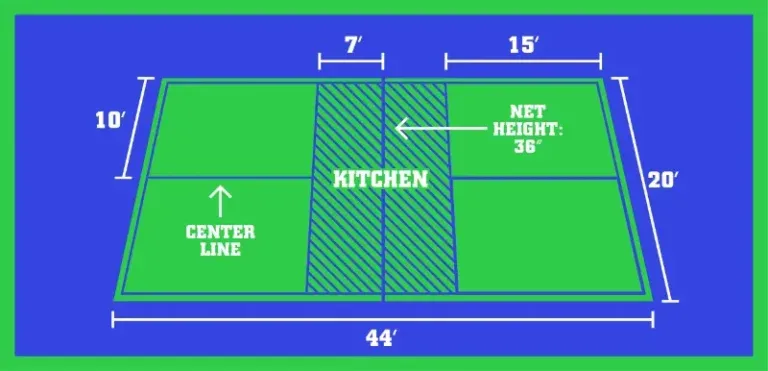
Familiarizing yourself with the legal play boundaries of the NVZ is essential, as violations can lead to immediate points lost and frustrating misplays. Emphasizing these regulations during your practice routines will help internalize the necessary awareness for successful play.
Positioning and movement within the NVZ
Successful players are adept at staying balanced within the NVZ. Staying actively engaged as you move into or out of this area builds confidence during rallies. The goal of positioning is to avoid stepping into the NVZ while also giving yourself enough room to react positively when the ball comes your way.
Incorporating footwork drills that emphasize changes in direction will enhance your agility and allow for quicker adjustments. As you gain comfort operating within this high-pressure region, you’ll create opportunities to dictate the game further, maintaining a balance between offensive and defensive play.
Mastering the pressurized zone
The NVZ is often seen as a pressurized zone, where quick decision-making is paramount. Practicing your deep dinks, for instance, within this area creates fundamental skills for managing high-pressure situations. Understanding when to allow shots to bounce or when to volley is a crucial game determining element.
Proficient players recognize the importance of timing and making decisions without second-guessing. Cultivating this awareness will lead to improved shot selection regardless of attempts by opponents to disrupt your rhythm. Ultimately, mastering dinking within the NVZ sets the stage for advancing your overall gameplay.
Tips for developing dinking consistency
The power of repetition and practice
Developing consistent dinking relies on the power of repetition. Much like practicing a musical instrument, dinking requires dedicated practice to establish muscle memory. Embrace the philosophy of repeated drills creating a routine that includes different types of dinks will enhance skills over time.
Consider setting aside specific training sessions dedicated solely to dinking practice. Utilize partner drills, wall drills, or solo practice routines to reinforce consistency. As you regularly engage in dinking exercises, you'll notice an increase in flow, confidence, and precision; thus, fostering consistent execution.
Focusing on precise ball placement
For players seeking to improve their game, focusing on precise ball placement is vital. By engaging in target practice, you can shape your understanding of angles and depth control while avoiding unnecessary mishits. Establish clear targets on the opponent's side during practice sessions to encourage accuracy.
Creating visual markers on the court clarifies the goal, guiding each shot toward a designated spot. Cultivating this habit translates into greater control during matches, elevating the standard of gameplay while undermining opponents’ defenses.
Maintaining a soft and controlled touch
Maintaining a soft and controlled touch during your dinks is essential. Avoid falling into the trap of overhitting; instead, think of your paddle as a gentle guide rather than a weapon of force. Utilize analogies like the “baby bird” nurturing the ball as you release it rather than launching it into the air.
Focus on practicing finesse shots to develop a delicate touch. The more you emphasize gentle exchanges during practice, the more natural and controlled your dinks will become in real matches.
Adding variety and deception to your dinks
Short vs. deep dinks: mix up your shots
Mixing up dinking depth represents a key victory strategy. By alternating between short dinks that barely clear the net and deeper shots that push your opponent back, you keep them on their toes. Just as an artist plays with colors to craft a masterpiece, you too can creatively manipulate your dinks for maximum effect.
The objective is to keep your opponents guessing, preventing them from settling into predictable patterns. By varying your dinking angles and depths, you disrupt the rhythm, opening avenues for finishing shots.
Crosscourt vs. down-the-line: expand your angles
To create even more complexity in your dinking strategy, experiment with dinking direction. Varying between crosscourt shots and down-the-line shots allows you to open up the court and exploit your opponent’s positioning. Each angle may challenge their reflexes while testing their readiness to adjust.
Establishing a blend of crosscourt and down-the-line dinks forces your rivals to adapt quickly. Understanding how to manipulate angles will create strategic advantages during exchange rallies.
Target your opponent's weaknesses
Effective dinking isn’t merely about your own strengths but also about recognizing your opponent's weaknesses. By applying strategic dinking, assess your opponent’s capabilities target their forehand or backhand based on what they struggle with the most. Forced errors lead directly to potential scoring opportunities.
A keen eye for recognizing patterns can lead to significant advantages during decisive moments of gameplay. Utilize these observations to dictate your approach, keeping your opponent guessing and susceptible to your maneuvers.
Transitioning from dinking to attacking
Recognizing attackable balls
As you refine your dinking skills, you'll want to identify attackable balls. High dinks, short dinks, or shots made by out-of-position opponents may present ideal opportunities to transition into aggressive play. Recognizing these windows of opportunity is essential for amplifying overall attack strategies.
Consider the concept of timing executing quick transitions from dinking to attacking can grant you a substantial competitive edge. The more adept you become at distinguishing between dinks and attack shots, the more opportunities you will seize.
Executing speed-ups and volleys
Mastering the execution of aggressive shots is contingent on successfully transitioning from dinking. Speed-ups and volleys present significant offensive advantages when timed accurately. When attackable balls are in view, allow your instincts to drive your movements with an assertive approach.
When volleying, ensure your paddle is ready and wait for the ball, engaging with confident strokes to finish points. This practiced patience leads to an unyielding transition into advanced aggression in your gameplay.
Maintain balance and control during transitions
A key component in transitioning strategies is balancing back control. Overcommitting can lead to mistakes, so aim for controlled aggression not allowing impulsiveness to dictate play. Exercise caution and assess your shot selection, maintaining the grace of a dancer as you weigh risks.
Throughout training and practice, remain focused on transitioning your skillset smoothly from dinking to attacking shots. This balance creates versatility, allowing you to dictate dynamics like a skilled maestro guiding an orchestra.
Dinking in doubles play: teamwork makes the dream work
Effective communication with your partner
When engaging in doubles play, communication becomes indispensable. It’s crucial to clearly call your shots and share intentions with your partner to avoid confusion. Whether you’re executing dinks or transitioning to more aggressive play, announcing your plans will create a unified strategy on the court.
Just as a well-tuned team operates on the same wavelength, forming effective communication habits fosters synergy during matches. Avoiding mixed signals enhances court coverage and defense, significantly boosting your chances of success.
Strategies for covering the court as a team
Covering the court effectively as a unit entails strategic planning. A proper dinking formation ensures that both players can capitalize on difficult shots while maintaining solid court coverage. Anticipate your opponent's shots and poach where needed to disrupt their momentum.
Just like dancers perform choreography on stage, good coordination and anticipation create an engaging spectacle. Practice harmonized movements during dinking drills to cultivate a strong understanding of shared responsibilities on the court.
Developing powerful team dinking patterns
Lastly, constructing synchronized dinking patterns can help overpower opponents. As you engage in collaborative practice, establish a rhythm that complements your partner’s movements. Take note of how your combined strengths can confuse and dismantle your rivals, ultimately increasing the likelihood of errors in their game.
Together, you and your partner can develop unique patterns that will prove effective during high-pressure matches. As you master these team dynamics, you create a powerful force that is difficult for opponents to counter, steadily paving the way for victory.
Conclusion
Mastering the art of dinking in pickleball requires both skill and strategic understanding. By embracing the techniques, drills, and strategies detailed in this guide, players can enhance their gameplay significantly. Dinking is not merely a soft shot; it is the foundation of control, strategy, and anticipation in pickleball. As you practice tirelessly, remember that with each dink, you're not just sending the ball over the net but crafting a masterpiece of gameplay that reflects your dedication and passion for the sport. Enjoy the journey, cultivate your skills, and let every dink become a stepping stone to pickleball greatness.










